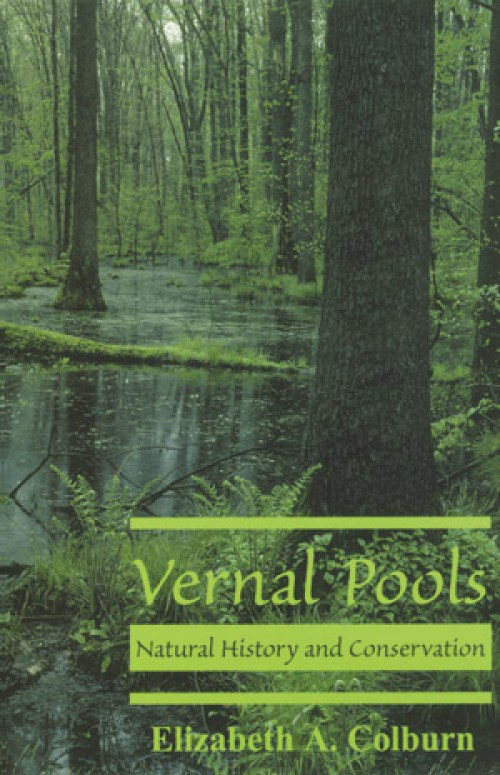by By Elizabeth A. Colburn
The McDonald & Woodward Publishing Company, 2004
In the past decade or so, vernal pools have received a fair amount of attention from people other than naturalists, ecologists, conservationists, and natural resource professionals. An increasing awareness about these small, isolated pools has been fostered among the general public, thanks in part to the work of a variety of conservation agencies and organizations that have developed curricula on vernal pool ecology and published guides to help landowners recognize, manage, and conserve these often-overlooked wetland systems. Among the people who have led this charge, both as a scientist and an educator, is Elizabeth Colburn, author of Vernal Pools: Natural History and Conservation.
Like Charles Johnson’s Bogs of the Northeast, this book brings together a wide variety of information about a particular natural community – from hydrology to landscape ecology, microscopic organisms to mollusks, arthropods to amphibians – and presents it in a comprehensive, yet accessible, format.
The book’s 14 chapters are loosely arranged in five major sections, beginning with a broad overview of vernal pool ecology that is both authoritative and a pleasure to read. It moves on to describe the physical characteristics of vernal pools, including a wonderful chapter on hydrology and another describing the various landscape features that contribute to the diversity of plant and animal communities that different pools may support. About half of the 426-page book is devoted to a comprehensive summary of the biology and ecology of vernal pool wildlife and plants. Divided into nine chapters, this section covers everything from microscopic organisms (bacteria, protists, algae, and fungi) to vegetation, crustaceans, insects, amphibians, other vertebrates, and more. For each taxonomic group, it contains up-to-date information about life history, habitat, eggs, larvae, and distribution. The final two sections of the book cover vernal pools as ecosystems and examine issues surrounding vernal pool conservation. There is also a glossary, an extensive bibliography, and an appendix consisting of an annotated list of vernal pool fauna.
The book has numerous tables, line drawings, and photos throughout, as well as 16 pages of color plates, which complement the text. As a biologist, I found the list of suggestions for future research needs at the end of each chapter to be my favorite feature of the book. These include thoughts on technical scientific studies, as well as natural history observations that could be made by amateur naturalists or school groups.
The book is not without its flaws, however. I found the method of citing published materials to be quite cumbersome. Within each chapter, the book uses sequentially numbered superscripts to identify scientific papers. Author and date of each citation are then listed at the end of each chapter, and the full citation is listed in the bibliography. This results in a long list of citations for each chapter, many of which may be listed numerous times. For example, the chapter on amphibians ends with 3 pages of citations, and one randomly selected reference was cited at least 23 times!
Despite this shortcoming, the book provides a wealth of information wrapped up in a comprehensive, inch-thick text. This valuable reference should appeal to a variety of people: students and teachers, conservation commission members, town planners, foresters, biologists, and armchair naturalists alike.


